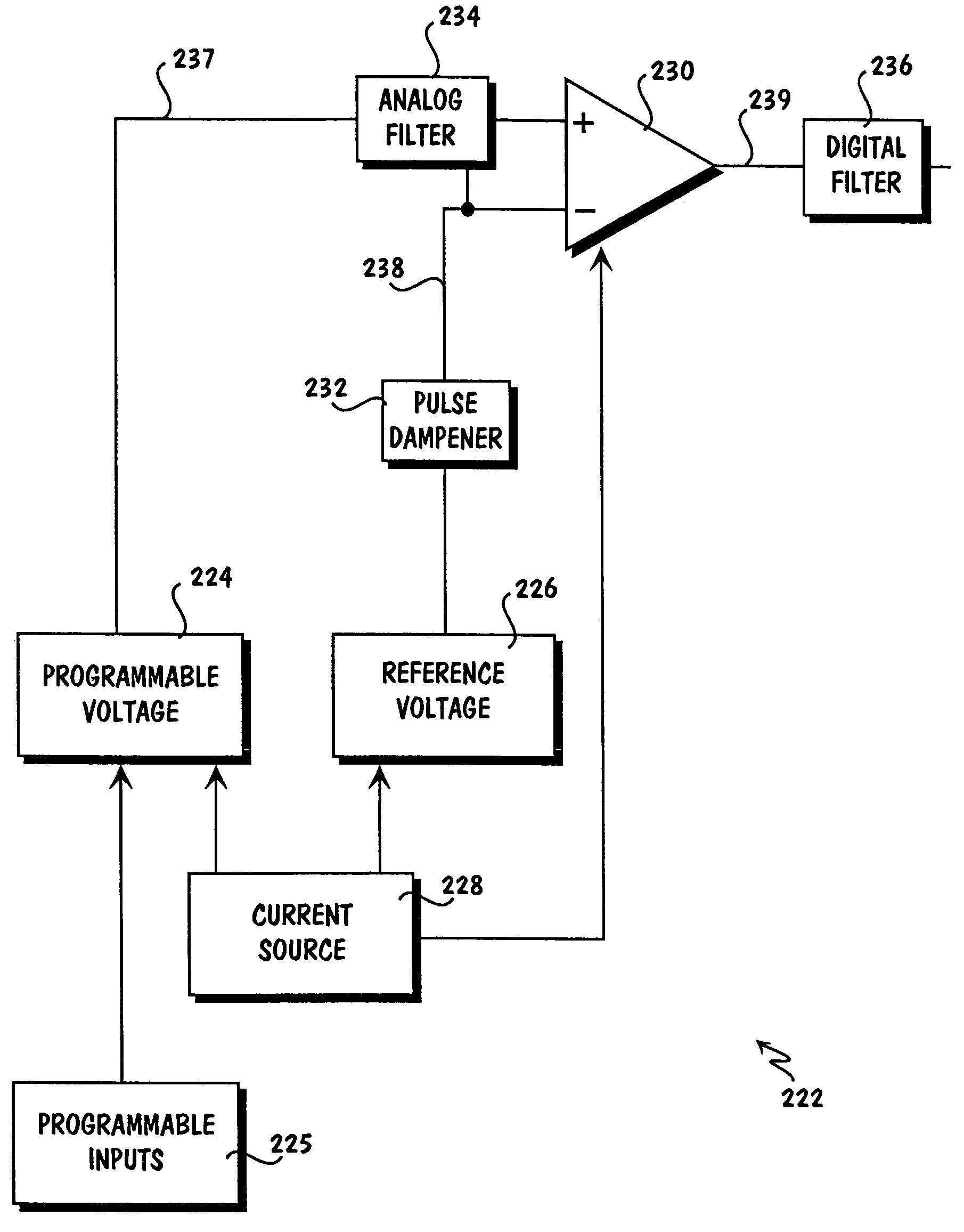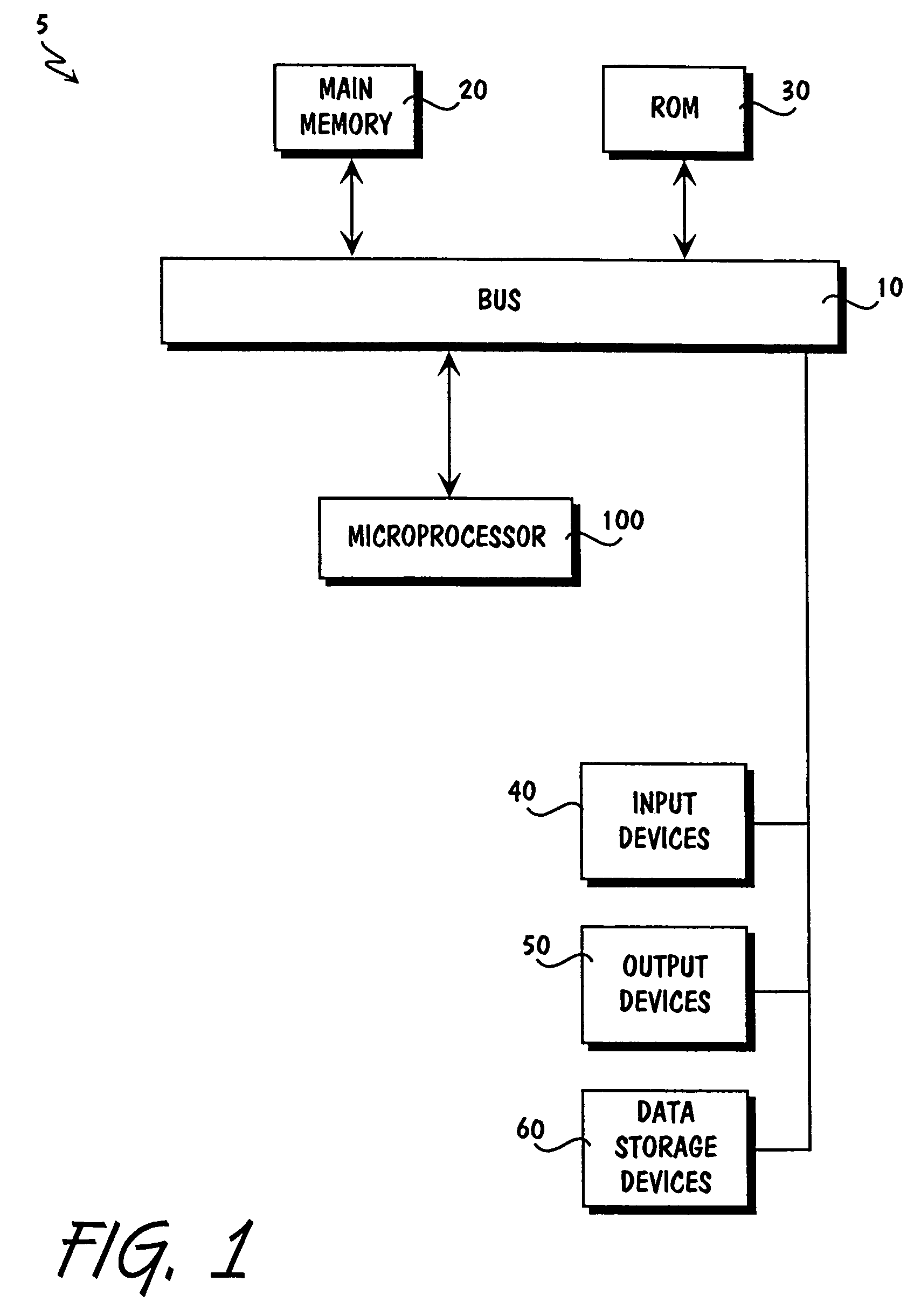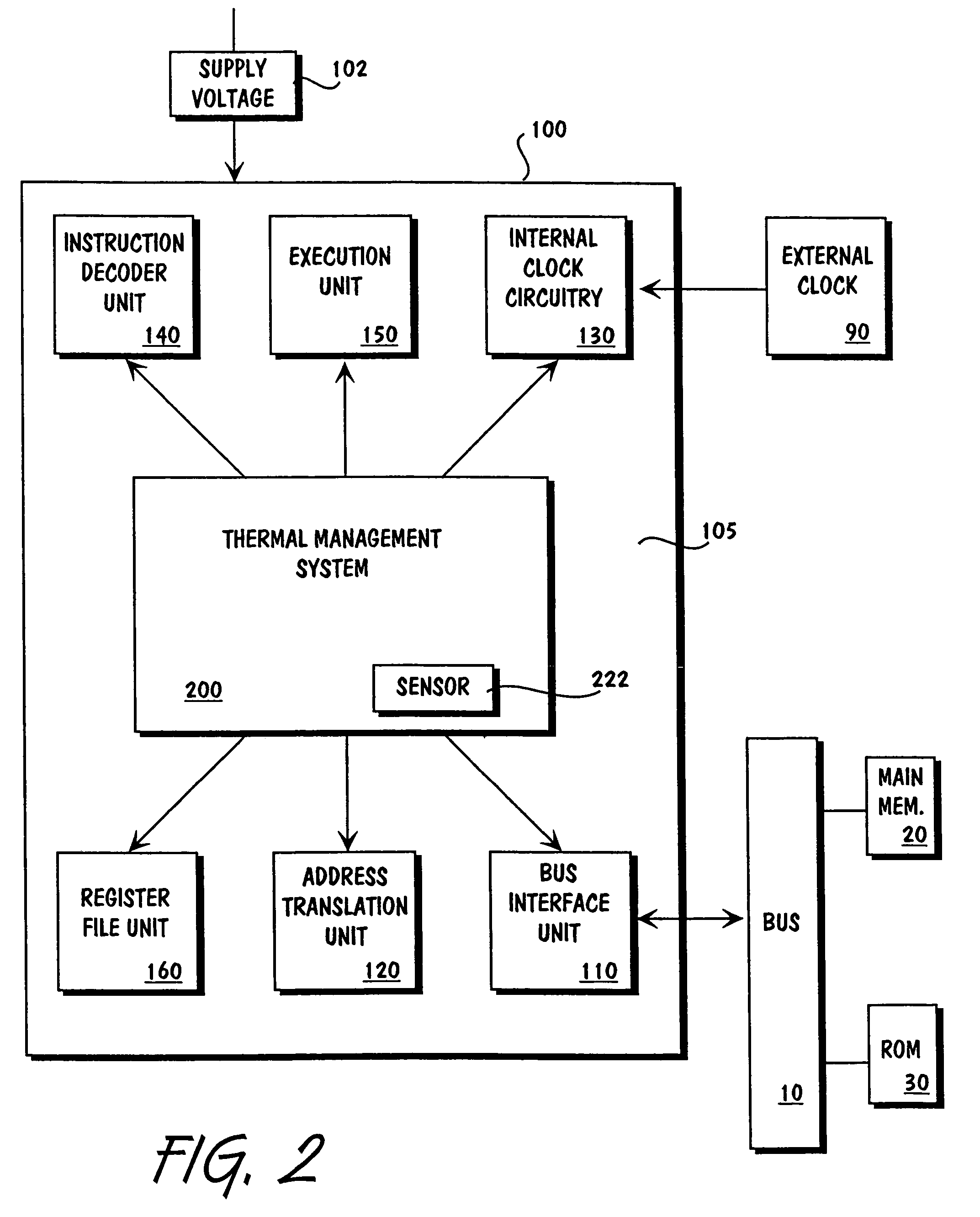Methods and apparatus for thermal management of an integrated circuit die
a technology of thermal management and integrated circuits, applied in the direction of instruments, heat measurement, sustainable buildings, etc., can solve the problems of reducing the service life of the heat management system, and pushing the conventional thermal management technology to its limit, etc. performance and reliability suffers or cannot be guaranteed
- Summary
- Abstract
- Description
- Claims
- Application Information
AI Technical Summary
Benefits of technology
Problems solved by technology
Method used
Image
Examples
Embodiment Construction
[0017]The above-noted deficiencies of prior art thermal management techniques are overcome by providing a tightly integrated thermal management system entirely contained on a semiconductor die, such as a microprocessor. Although illustrated below in the context of thermal management of a microprocessor, those of ordinary skill in the art will understand that the methods and apparatus described herein are generally applicable to all types of IC devices.
[0018]Shown schematically in FIG. 1 is a computer system 5 incorporating a microprocessor 100 providing on-chip, closed-loop thermal management. The microprocessor 100 is coupled via a bus 10 to main memory 20, which may comprise one or more dynamic random access memory (DRAM) devices for storing information and instructions to be executed by microprocessor 100. The main memory 20 may also be used for storing temporary variables or other intermediate information during execution of instructions by microprocessor 100. Computer system 5 ...
PUM
| Property | Measurement | Unit |
|---|---|---|
| temperature | aaaaa | aaaaa |
| power consumption | aaaaa | aaaaa |
| voltage | aaaaa | aaaaa |
Abstract
Description
Claims
Application Information
 Login to View More
Login to View More - R&D
- Intellectual Property
- Life Sciences
- Materials
- Tech Scout
- Unparalleled Data Quality
- Higher Quality Content
- 60% Fewer Hallucinations
Browse by: Latest US Patents, China's latest patents, Technical Efficacy Thesaurus, Application Domain, Technology Topic, Popular Technical Reports.
© 2025 PatSnap. All rights reserved.Legal|Privacy policy|Modern Slavery Act Transparency Statement|Sitemap|About US| Contact US: help@patsnap.com



